The two countries who share the title for the World's Worst Nuclear Disaster, Japan and Ukraine, have both been homes for me. Living in Japan during the earthquake, tsunami, and resulting Fukushima accident last year brought to my doorstep a kind of tragedy, desperation, and hopeful bond that I hadn't experienced since 9/11. Mention the 1986 accident at "Chernobyl" ("Chornobyl" in Ukrainian) here in Ukraine, and it tends to naturally evoke the same kinds of feelings.
I wanted to learn more about just what happened 26 years ago, and used one of my long train stopovers in Kiev a few weeks ago to visit the National Chernobyl Museum in Podil:
An ambulance and liquidator vehicles parked out front welcome you to the museum:
Hovering over you as you walk up into the main part of the museum are the original signs from 76 villages whose unfortunate fates lied within the radiation-soaked evacuation zone, resulting in their abandonment:
The museum itself is a fascinating collection of over 7,000 artifacts, photographs, documents, ephemera, and personal belongings of those who died from radiation exposure which had, up until quite recently, all been strictly classified from the holdovers of Soviet secrecy:
The town closest to the exploded nuclear reactor was Prypiat, located a mere 3 kms away. Following the accident, however, the townspeople were not immediately informed due in part to the Soviet Union's failure to grasp the severity of the accident, and their desire to conceal it's scale once understood. The people of Prypiat went about their daily business with dozens falling ill with uncontrollable fits of coughing and vomiting, as well as migraines and metallic tastes in their mouths.
It wasn't until, over 1,000 kms away in Sweden that the radiation levels set off alarms, that two days after the event on April 28 the Soviet Union admitted that an accident had, indeed, occurred. Although the rest of the world was slowly catching onto the situation, the Soviets were too busy crafting messages for the state television broadcast of the Russian Federation that made sure no one got too hot and bothered by the whole thing (from Vremya):
"There has been an accident at the Chernobyl Nuclear Power Plant. One of the nuclear reactors was damaged. The effects of the accident are being remedied. Assistance has been provided for any affected people. An investigative commission has been set up."
There was a good time-lapse lava-lamp-esque video of the path of the nuclear cloud from Chernobyl, and shows the scope of things by the time it actually reached Sweden and was made public:
Prypiat's evacuation began on April 27 at 2:00pm. Less than three hours later, all 53,000 had been evacuated to Kiev or nearby areas. Everyone was told to bring only necessary items such as documents, money, and a little food as they would be gone, at most, only three days. The residents were never allowed to return:
Today, Prypiat is a full-fledged, post-apoctolyptic ghost town which you can actually go to with a pre-arranged government tour. Although I probably won't be heading to the actual exclusion zone on my own (as cool as it sounds, it's something I've realized that even I'm too cheap to partake in with its $170 price tag!), seeing the before and after photos in the gallery were pretty fascinating; everything from hotels, main streets, and kindergartens are today just overgrown shells of their former lives:
(City sign and downtown Palace of Culture)
(Main road and apartments)
(Kindergarden and hotel)
One of the best parts of the musuem for me was a display of posters centered around the design them of "The World Since Chernobly and Fukushima." There were some incredible designs linking the two:
I didn't realize how emotional I would feel after coming upon the area that played more of a tribute to the disaster in Japan, but seeing it took me back to that day over a year ago when the earth started to move and didn't seem to want to stop for us. Watching on live tv as the tsunami rushed upon shore in Tohoku like a cloud of black smoke, and hearing of the daily radiation fears from Fukushima is something that I'll never forget and will always be connected to:
Walking out of the museum, you pass by the same set of town and village signs with a red stripe through them signaling your exit (as is common here in Ukraine). The addition of the black background, however, reminds you of the ghosts you leave behind on your departure:
I have to say that Kiev's Chernobyl Museum is definitely one of the most interesting places I've been here in Ukraine. Part historical account, part tribute, and part preventative plea, it's definitely hard to walk out of the place without nuclear reactors on your mind (and new added doubts about the food you're going to be eating) and the curious struggles and tragedies of man in your heart. If time, money, and/or radioactive sensitivities keep you from visiting the real Chernobyl exclusion zone here in Ukraine, this is one case where I think the safer option can prove just as interesting.











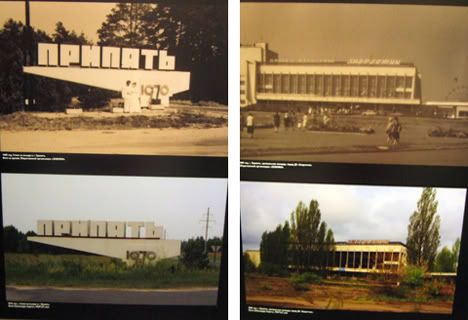

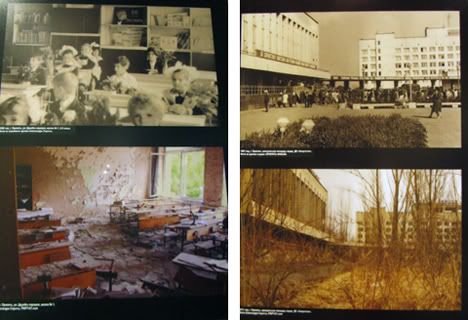




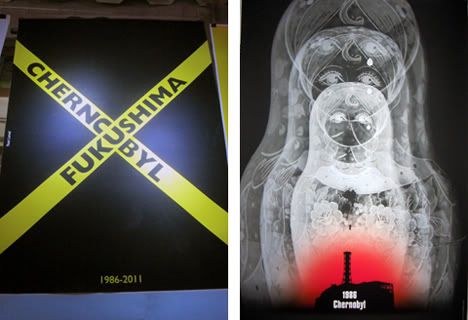

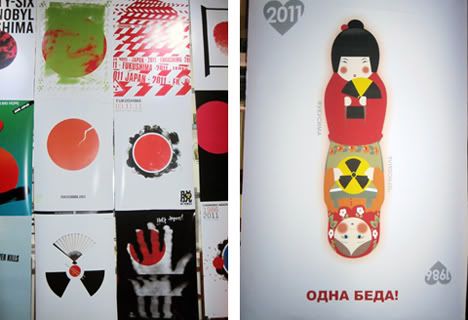
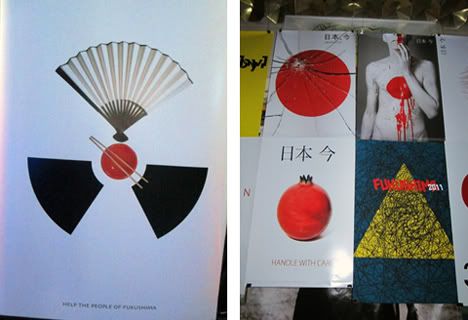

Wow Crystal! Thanks for sharing. It's amazing seeing all of that and remembering that just over a year ago similar things were happening here. Makes me so sad for the families and people who just thought they were going to be away for a few days though.
ReplyDelete